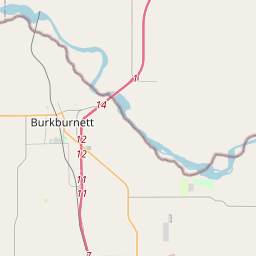Central Baptist Church







In 1924, fourteen individuals met at the Bradley’s Corner Community Center for the purpose of organizing a missionary Baptist church. The Reverend J.L. Walters served as the church’s first pastor. After a short period of regular meetings at the community center, the small congregation decided to move to the adjacent oil boom town of Thrift, which was a more central location for the church’s membership. In September of that year, Thrift Baptist Church constructed a building from used lumber donated by an Iowa Park Church that was constructing a new building. The new church was built on the east side of Thrift, on the Waggoner property.
In 1952, as more and more church members moved into town from rural areas, the congregation moved the church building to Burkburnett, and the church’s name was changed to Thrift Memorial Baptist Church. An educational building was constructed in 1959, and later additions to the church campus were made in 1961 and 1999. In 1961, the church’s name was again changed to Central Baptist Church, to better reflect the church’s new image as a “city” church.
Among the many organizations founded by members of the congregation are the Women’s Missionary Union, established during the 1920s, and the “G.A.” Girls’ Youth Organization, which formed in the 1950s. The congregation has served the community through the establishment of a homebound ministry, a youth praise team and the Sonshiners senior adult group. Today, Central Baptist Church serves as a reminder of the small group of individuals who founded Thrift Baptist Church, while continuing as a spiritual leader in the Burkburnett community
As one of the most visible programs of the Texas Historical Commission (THC), historical markers commemorate diverse topics in Texas history, including: the history and architecture of houses, commercial and public buildings, religious congregations, and military sites; events that changed the course of local and state history; and individuals who have made lasting contributions to the state, community organizations, and businesses.
The state of Texas was once an independent country known as the Republic of Texas. It gained independence from Mexico in 1836 and was a separate nation until it was annexed by the United States in 1845.
The area that would become Wichita County was officially settled by European Americans in the mid-19th century. In 1856, the Texas legislature created Wichita County, naming it after the Wichita tribe. The construction of the Fort Worth and Denver City Railroad through the county in the late 19th century brought growth and development to the area, attracting settlers.
During the late 19th and early 20th centuries, Wichita County experienced the boom and bust cycles common in many Texas counties. Agriculture, particularly cattle ranching and cotton farming, were the primary industries, but oil was discovered in the region in the early 20th century, leading to a significant economic boost. The county became an important oil-producing region, with oil wells and refineries becoming a common sight.
In the present day, Wichita County continues to be a vital part of Texas. It is home to the city of Wichita Falls, the county seat and largest city, which serves as a regional hub for commerce, education, and healthcare. The county's economy has diversified, with sectors such as manufacturing, healthcare, education, and military operations playing a significant role. Wichita County's rich history and natural beauty, including attractions like the Wichita Mountains Wildlife Refuge, make it a fascinating place to explore and learn about.
Wichita County Timeline
This timeline provides a glimpse into the major events and milestones that have shaped the history of Wichita County, Texas.
- 1872 - Wichita County is officially established on February 1.
- 1882 - The town of Wichita Falls is incorporated on September 27.
- 1905 - Wichita County experiences a significant population boom due to the discovery of oil.
- 1922 - The first hospital in Wichita County, Wichita General Hospital, is established.
- 1927 - Sheppard Air Force Base is built near Wichita Falls.
- 1957 - The Wichita Valley Airport opens, later renamed Wichita Falls Municipal Airport.
- 1964 - A destructive tornado hits Wichita Falls, causing significant damage and loss of life.
- 1995 - Wichita County voters approve the sale of alcohol, ending the county's prohibition era.
- 2007 - Lake Arrowhead State Park, a popular recreational area, opens in Wichita County.
- 2019 - The Wichita County Courthouse celebrates its 100th anniversary.
- 2020 - The COVID-19 pandemic impacts Wichita County, leading to various restrictions and measures.